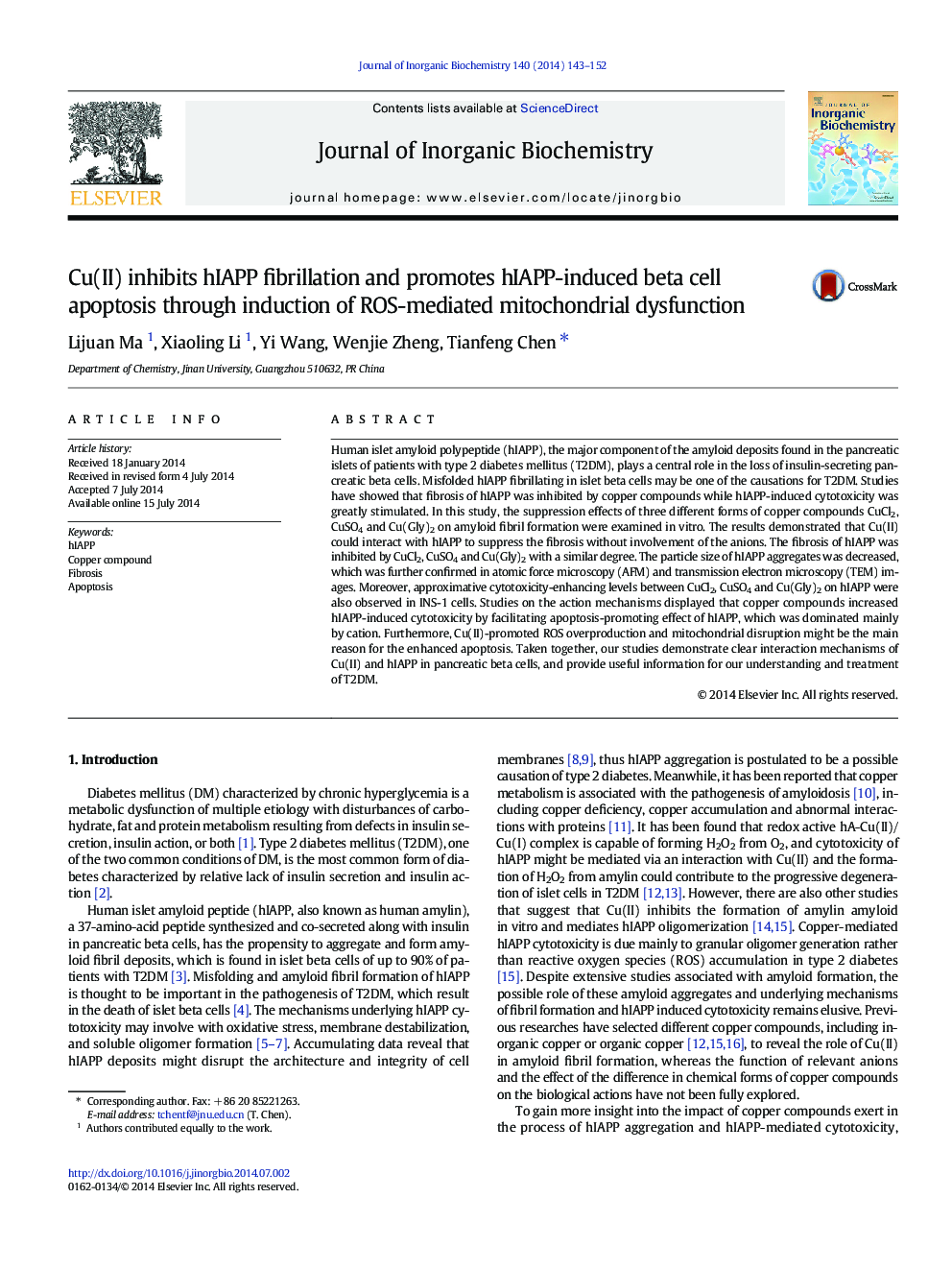| کد مقاله | کد نشریه | سال انتشار | مقاله انگلیسی | نسخه تمام متن |
|---|---|---|---|---|
| 1317307 | 1499447 | 2014 | 10 صفحه PDF | دانلود رایگان |

Human islet amyloid polypeptide (hIAPP), the major component of the amyloid deposits found in the pancreatic islets of patients with type 2 diabetes mellitus (T2DM), plays a central role in the loss of insulin-secreting pancreatic beta cells. Misfolded hIAPP fibrillating in islet beta cells may be one of the causations for T2DM. Studies have showed that fibrosis of hIAPP was inhibited by copper compounds while hIAPP-induced cytotoxicity was greatly stimulated. In this study, the suppression effects of three different forms of copper compounds CuCl2, CuSO4 and Cu(Gly)2 on amyloid fibril formation were examined in vitro. The results demonstrated that Cu(II) could interact with hIAPP to suppress the fibrosis without involvement of the anions. The fibrosis of hIAPP was inhibited by CuCl2, CuSO4 and Cu(Gly)2 with a similar degree. The particle size of hIAPP aggregates was decreased, which was further confirmed in atomic force microscopy (AFM) and transmission electron microscopy (TEM) images. Moreover, approximative cytotoxicity-enhancing levels between CuCl2, CuSO4 and Cu(Gly)2 on hIAPP were also observed in INS-1 cells. Studies on the action mechanisms displayed that copper compounds increased hIAPP-induced cytotoxicity by facilitating apoptosis-promoting effect of hIAPP, which was dominated mainly by cation. Furthermore, Cu(II)-promoted ROS overproduction and mitochondrial disruption might be the main reason for the enhanced apoptosis. Taken together, our studies demonstrate clear interaction mechanisms of Cu(II) and hIAPP in pancreatic beta cells, and provide useful information for our understanding and treatment of T2DM.
Cu(II) inhibits the fibrillation of human islet amyloid polypeptide (hIAPP) to form oligomers that are ultimately assembled into aggregates, promotes the intracellular ROS generation and triggers the mitochondrion-mediated cell apoptosis.Figure optionsDownload as PowerPoint slide
Journal: Journal of Inorganic Biochemistry - Volume 140, November 2014, Pages 143–152